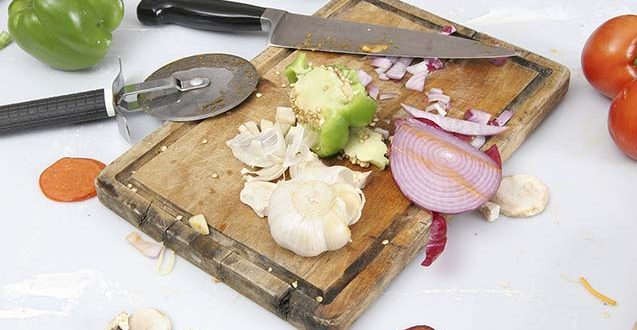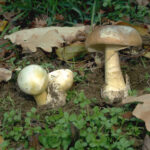
What is cross contamination?
Cross contamination occurs when bacteria and viruses are transferred from a contaminated food or surface such as a chopping board and utensils to other food. For example, it can happen when bacteria from the surface of raw meat, poultry, seafood and raw vegetables (such as unwashed potatoes and other root vegetables), are transferred onto ready to eat foods, such as leaf and vegetable salads, rice or pasta salads, cooked meats, poultry, seafood or even fruit. The bacteria on the raw food are killed when the food is cooked, but the ready to eat food is eaten without further cooking – bacteria, viruses and all.
Watch our short video about safe food preparation
Keep it clean
Hands are among the obvious culprits in transferring bacteria and viruses from raw to ready to eat food, but direct contact with soiled raw foods, dirty chopping boards, knives and other food preparation implements and containers can also spread the contamination. Chopping boards, plates and knives, blenders, mixers, bowls, or any other surface that has been in contact with raw meats, seafood and soiled vegetables and herbs needs to be carefully washed with warm water and detergent, then rinsed and thoroughly dried before being used for ready to eat foods.
Raw foods
Cross contamination can also occur from incorrectly storing raw food in the fridge. If raw food is placed in direct contact with ready to eat foods, or if raw meat juices drip onto cooked foods, fruit and other ready to eat food, cross contamination can occur.
Raw foods should always be treated as though they are contaminated. Raw food, such as meat, poultry or seafood, should be stored in a rigid leak proof container or at the bottom of the fridge to prevent it coming into direct contact with ready to eat food or to prevent meat juices or liquids dripping onto other food. Ready to eat food should be stored covered in the fridge to further reduce the risks.
Chopping boards
In the home it really doesn’t matter whether you have wooden, plastic or glass chopping boards so long as they are kept really clean and in good condition. The porous nature of wood makes it advisable to use plastic or glass chopping boards for raw meat, poultry and seafood. It is easier if you have two boards – one used only for raw food and one for cooked and ready to eat food or bread – to prevent cross contamination. All chopping boards should be scrubbed with hot water and detergent and dried after preparing raw foods. Plastic chopping boards are good as they can be washed at high water temperatures in the dishwasher. All plastic and wooden cutting boards wear out over time. Once cutting boards become excessively worn or develop hard-to-clean grooves, they should be discarded.



